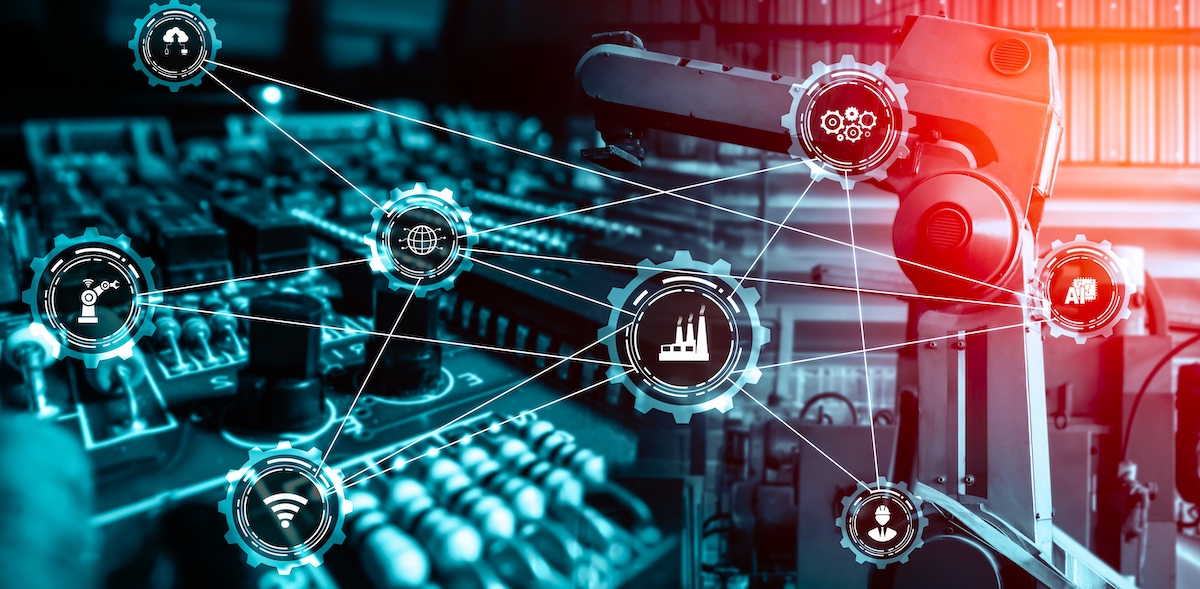Industrial DataOps for IIoT Scalability
Most industrial IoT difficulties are rooted in data management shortcomings. However, these challenges are not the same as those faced in a purely IT setting. For example, operational technology (OT) data is high-velocity time series and event information that many times lacks the detailed metadata descriptors and features needed to leverage it outside of the operations organization. In comparison, business IT data comes across in batches or transaction records with different metadata descriptors where time-stamp references are not always corelated. Merging these datasets, in context, is not trivial work, but, if done right, yields new operational insights that can provide a competitive advantage.
With that in mind, Hitachi provides tools that make the job of correlating OT and IT data as part of IoT easier. Lumada Industrial DataOps automates the process of abstracting, tagging, and rationalizing IT and OT data and organizes it in the data lake or data warehouse so it is usable for analysis and building AI and ML solutions. Data pipelines are established, and multiple transformations and inferences can be calculated and orchestrated as part of the workflow. Industrial process engineers can work with data scientists, analysts, and applications consultants to unlock the combined value and make major operations improvements.
Bumps in the Road to Integrating IIoT and Leveraging AI
Organizations have welcomed the tantalizing promise of achieving greater situational awareness by integrating data from their business systems, control systems, historians, and maintenance management systems. By adopting DataOps techniques, enterprises hope to improve the delivery and operations of analytics. Today, AI- and ML-based applications are pervasive. Done right, IIoT introduces critical, real-time precision data to those applications. That data enables industrial organizations to rely on more than just intuition for many processes. The result is increased visibility, predictability, and prescriptive powers that enhance decision-making.
But reality hasn’t lived up to the promise, and industrial operations have had a mixed relationship with IoT technologies. While there has been considerable success at the project level, broad IIoT deployments and the resulting analytics capabilities have progressed in fits and starts. Enterprises will need to leverage IIoT as well as AI and ML technology across far more use cases to better support their existing workforce and overcome supply chain issues. It turns out that it is more complicated than developers anticipated to scale their IIoT proofs of concept to stretch across a company.
Enabling Enterprise Scalability
Lumada Industrial DataOps directly addresses the four key challenges that hinder the enterprise-wide expansion of IIoT applications.
Challenge 1: The Need for High-Level Data Management
Organizations need solutions that make it possible to access data in motion and at rest from the widest array of sources, integrate all that data, transform the data, and perform analysis. While all that happens, data security must be maintained and policies enforced to adhere to compliance and governance requirements.
Challenge 2: Automating Data Organization
To create an efficient production pipeline for AI models, data scientists and analysts need an environment within which they can organize data and build models to detect events. This requires a system that automates the data analysis function, rejecting noise and providing people with a rich data signal that can be predictive or prescriptive in context avoiding data rich, information poor syndrome.
Challenge 3: Accelerate the Training of AI Models
Starting every model from scratch is not practical, as this approach may introduce delays and costs that get in the way of meeting business objectives. Data science personnel instead need templates that provide a proven foundation that they can then refine and adapt to meet specific requirements in a timely manner. Find out about the role of Industrial Engineering in Data Science.
Challenge 4: Shorten Application Delivery Time
Engineers and developers also need ready-made application components that provide a starting point.
Scaling Up to Meet Business Objectives
Using Lumada Industrial DataOps, organizations can accelerate their development of digital twins, which can be further combined with new AI and ML analytic templates that address a variety of critical industrial activities. These analytics include anomaly detection and prediction capabilities for maintenance and operations effectiveness. These data management and application building blocks support the many industry-specific solutions offered by Hitachi to speed cooperative deployment efforts for Hitachi clients and partner organizations.
Lumada Industrial DataOps embraces the synergistic relationships between data management, AI applications, and the next-level decision-making required in modern industrial environments. With Lumada Industrial DataOps, Hitachi empowers industrial enterprises to move their IIoT-driven AI applications out of the endless pilot phase and more quickly develop and scale for enterprise-wide deployment. More about How Digital Twins Are Revolutionizing Warehousing
Originally this article was published here.



